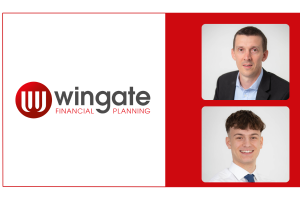OK, so we have a new toy to play with. The toy is AJ Bell’s new Sippcentre pricing structure, and (colours to the mast), it’s a good’un. AJ Bell is the last of the big guys to the transparency table, so their structure will generate considerable interest. It does need a little unpacking though, so let’s have a closer look.
Before we do, we’ll do some basic analysis here, but those who have purchased the lang cat’s Guide to Platform Pricing will get a free 8-page special on this with new tables and full detail. The entry of AJ Bell to the fully unbundled space has meant we’ve amended our method slightly, so you need the update. We’ll send everyone who bought the Guide either a PDF or a link. Anyone who signs up for the Guide from when the update comes out (which will be today or tomorrow) will get both in their download. We’re biased, but we think the Guide is really useful, and judging by the kind feedback from many advisers, we’re glad you think the same.
Right, so let’s go. AJ Bell’s structure is a hybrid, incorporating a basis points charge which starts at 0.20% (ooooh) and tiers down to 0.05% (aaahhhhh) for their investment service. There are trading charges of either £3.95 a pop or £1.50 a pop depending on whether it’s a single or bulk trade, and the SIPP has quarterly admin charges as existing supporters will be well used to.
You can get full detail from the Sippcentre website, but here’s a wee summary:
| Description | Price |
| ISA/GIA / most assets in SIPP | 0.20% tiering down to 0.05% |
| Trading charges | £3.95 adhoc, £1.50 for models |
| SIPP fees | £120 setup (waived for over £25k invested)
£100 – £180 (+VAT) p.a., waived if over £200k invested |
There are a couple of things here that should make the market sit up and take notice. The first is the basis points element of the charge. It’s commonly thought that the market is at/around 35bps for a straight GIA/ISA (at least for those providers who have an ad valorem structure) and the leaders at/around 25bps. 20bps up to £1m, tiering down to 5bps over £2m is extremely aggressive and a real sign of intent. AJ Bell has never been one for basis points charges, so this is a big move internally for them and one which must (if it takes off) force a market rethink for a number of players. At £100k, for a buy and hold portfolio with no trading (more on that in a moment) Sippcentre is now half the price of many of its competitors.
20bps tiering down is clearly cheap. But is it better than, say, a 25bps + £40pa structure like Fidelity or a collared structure like Skandia? The answer is in the trading costs. AJ Bell tells us that the average number of deals done in a year on a Sippcentre platform account is 7. That sounds plausible. So, in the tables (which are coming soon, don’t worry), we’ve loaded in 7 ad-hoc trades at £3.95 each. If the trades are being done as a bulk rebalance or using bulk dealing, that gets sliced to £1.50. So advisers would be well, er, advised to use the bulk tools where possible for clients.
Now, £3.95 a trade / £7.90 for the round trip is more than zero. We’ve done our maths exams, checked with the actuaries, and we’re unshakeable on that. But compared with some other platforms with trading charges of £12.50 or £25 for the round trip it looks good. What really stands out, though, is that those trading charges also apply to equities, ETFs, investment trusts and pretty much all CREST securities as far as we can tell. AJ Bell has flattened down the market in terms of trading costs for IFAs, and outsourced investment partners, who want to use asset classes outside of traditional mutual funds. That’s a big move, and one which could really facilitate some behavioural changes as it beds in.
So let’s have a look at some tables (these are shortened; subscribers to the Guide get the full bhuna)
|
Portfolio size |
£50k |
£100k |
£500k |
£1m |
|
AJ Bell |
0.26% |
0.23% |
0.21% |
0.20% |
|
ATS |
0.18% |
0.09% |
0.02% |
0.01% |
|
AXA Elevate |
0.60% |
0.55% |
0.45% |
0.35% |
|
Cofunds |
0.37% |
0.33% |
0.26% |
0.22% |
|
FFN |
0.34% |
0.29% |
0.26% |
0.25% |
|
Nucleus |
0.35% |
0.35% |
0.35% |
0.35% |
|
Skandia |
0.43% |
0.39% |
0.32% |
0.28% |
|
Standard Life |
0.40% |
0.40% |
0.32% |
0.27% |
So on this limited competitor sample AJ Bell looks very good, including 7 trades at full rate they are leading the pack outside of Alliance Trust Savings who still dominate with their fixed fee offering. Even if we included all 17 competitors from the full analysis they would still be top 2 at most points.
For SIPP, here we go:
|
Portfolio size |
£50k |
£100k |
£500k |
£1m |
|
AJ Bell |
0.59% |
0.45% |
0.21% |
0.20% |
|
ATS |
0.47% |
0.24% |
0.05% |
0.02% |
|
AXA Elevate |
0.60% |
0.55% |
0.45% |
0.35% |
|
Cofunds |
0.67% |
0.48% |
0.26% |
0.22% |
|
FFN |
0.92% |
0.59% |
0.32% |
0.29% |
|
Nucleus |
0.35% |
0.35% |
0.35% |
0.35% |
|
Skandia |
0.43% |
0.39% |
0.32% |
0.28% |
|
Standard Life |
0.60% |
0.60% |
0.55% |
0.45% |
Slightly less compelling here, especially around £100k; largely because of the quarterly charges (which fall away after £200k) and in the full analysis some others do come to eat their lunch. But the proposition is still top 3 or top 5 at virtually all points, and if you mix it together with ISA/GIA for an holistic portfolio (grammer) it looks good. The average SIPP on Sippcentre is, we think, quite a bit higher than other platform SIPPs, so y’know, it probably all works out.
So the upshot is, by waiting for the other big guns to reveal their hand, AJ Bell has been able to come up with a shape which is still unmistakeably them, but really puts them in a strong position to have strategic discussions with advisers on platforms rather than just SIPPs. Some may quibble on trading charges, some on the additional complexity of mixing fixed fees and basis points, but when you mix that in with basis points falling from 0.20% down to 0.05%, it’s a different argument.
Hope that was useful, we’ll bring you more as ever as folk move their pricing or new shapes launch. We suspect our next victim may be Zurich!




